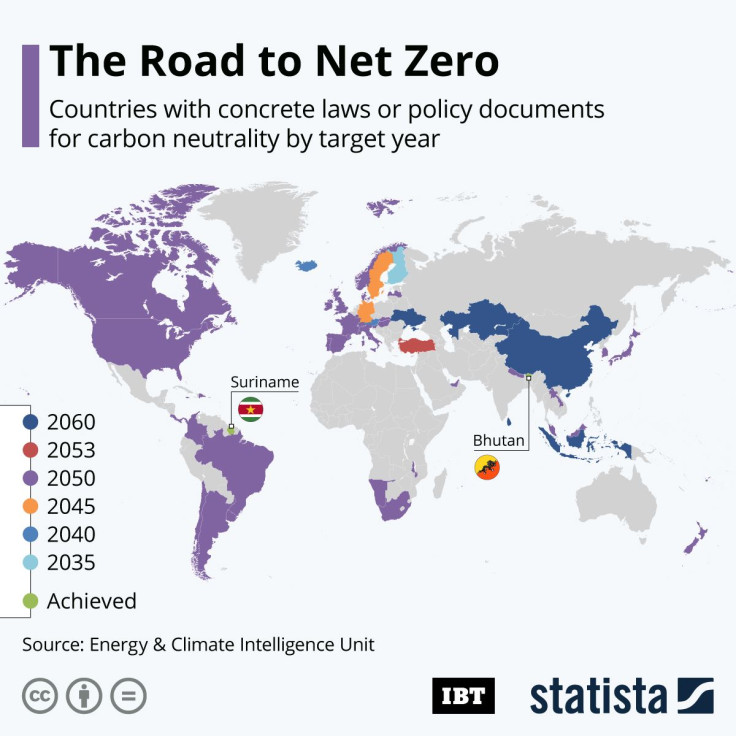Infographic: The Road To Net Zero

Out of the 137 countries pledging carbon neutrality, only 60 have put those pledges into written form via a concrete law or policy document. So while Australia's long-awaited commitment to net zero by 2050 in the days leading up to the COP26 global climate summit was seen as admirable and a way to ease tensions with its biggest strategic partners the U.S. and UK, it's still only perceived as a promise lacking concrete details. Even for the countries with concrete timeframes and policies in place, it's still a long way to go as our chart indicates.
Leading the road to net zero among bigger nations is Finland, which aims to become carbon neutral by 2035 via its medium-term climate change policy plan and national climate and energy strategy put into place in June of 2019. In Europe, Iceland and Austria are looking to reach net zero by 2040, with Germany and Sweden pushing the date for carbon neutrality to 2045. Most of the countries with climate pledges have put down 2050 as their goal, with the notable exception of China, India and Russia targeting 2060. These few exceptions might prove detrimental to the fight against climate change though, since those three countries were among the top 5 countries by CO2 emissions in 2019, with China emitting ten billion metric tons against the United States' five billion metric tons. Even though they don't contribute much on a global scale, Suriname and Bhutan are the only two countries that have already achieved net zero and are even looking at a net-negative carbon economy. This can be attributed to the relatively undeveloped nature of those places as well as the dense forest cover, which makes up 93 percent of the total area of Suriname, for example.
While the reduction of greenhouse gas emissions is a key part of the net zero concept and combating climate change, it's not its only relevant indicator. Artificial or natural carbon sinks like rainforests are also an important factor in reaching this goal since the reduction to zero carbon emissions is downright impossible to achieve. Therefore, carbon neutrality must be understood as a holistic concept, including developing technology to draw greenhouse gases from the atmosphere, furthering conservationist measures concerning important natural habitats, as well as reducing the overall output of carbon caused by industrialized production.




















